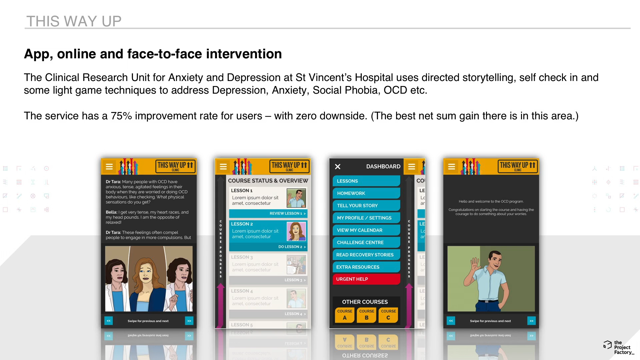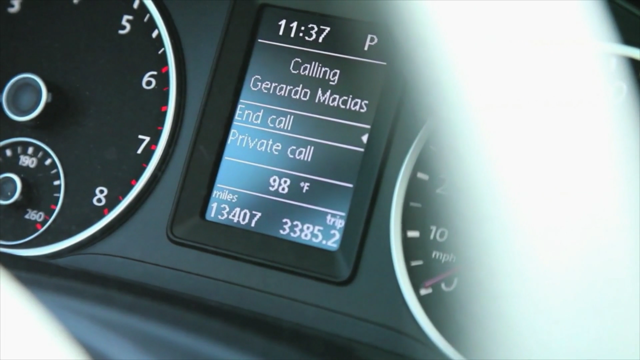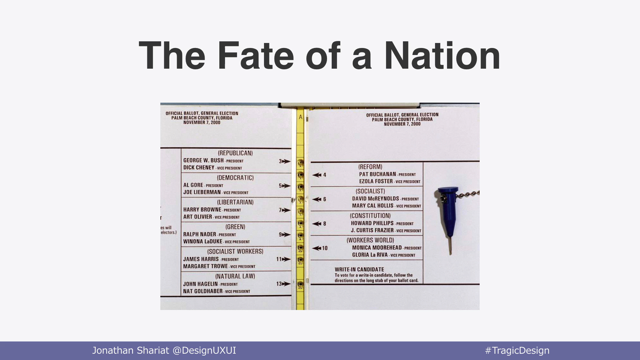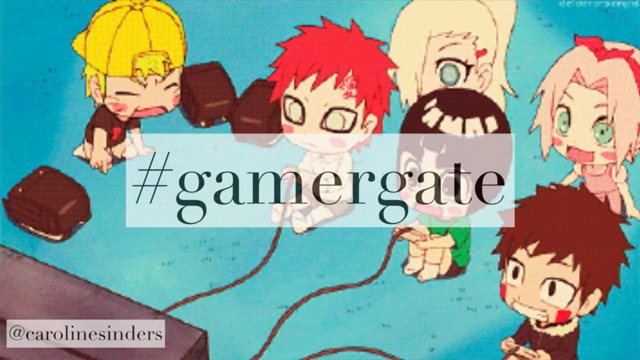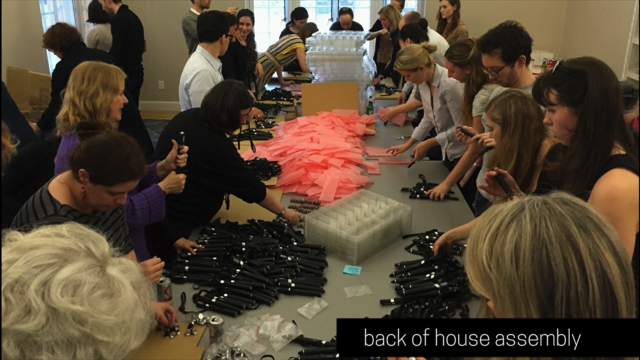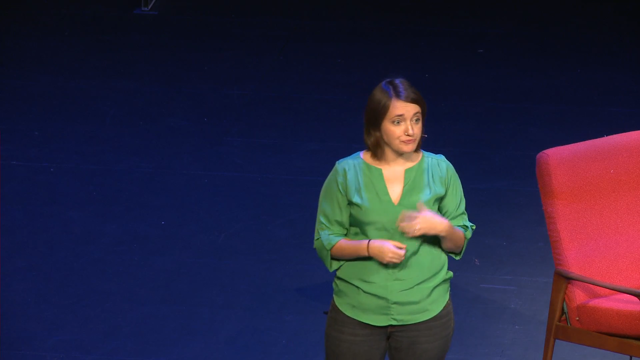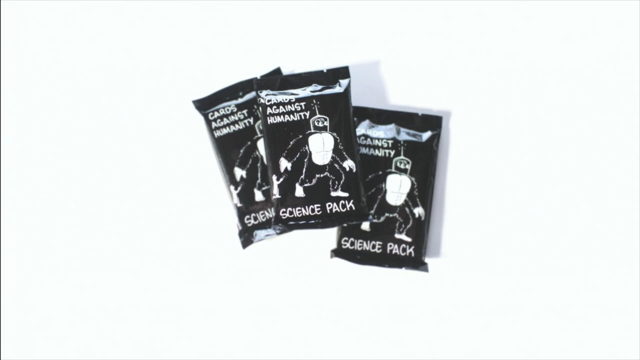(loud rush of air) - I might, just very quickly, introduce how it came to pass, to give you a sense of how our programmes come together. There's all sorts of inputs that I take.
I spend a lot of my life just seeing what people are working on and talking about and writing about and speaking about.
So, Jennifer Wilson, how this came about, was I saw Martin Tomitsch, who runs the programme at all levels that those students are part of up at the University of Sydney.
I'm not sure if he's in the room right now, but he's certainly been in and out.
So, Martin and Atau (mumbles) Tanaka is in the room as well and many will know him, kind of run this underground programme at design and computing.
And Jennifer spoke at a seminar for that group and I just saw some sweets from it.
I thought, that looks fantastic.
It's the first I've really heard about her. And I followed up her work and I thought, that looks incredible.
And what interest me most about it was the way in which she uses psychology as ways of motivating and changing behaviour.
Now, she applies these particularly in the healthcare and health space, but I think this has equal application in so many areas.
And it struck me as an ideal thing to have someone come and talk about, and to have her come and talk about, here at Direction this year. So Jennifer is at the Project Factory and she's worked for many years in design of games and systems and applications.
I'm really looking forward to hearing what she's got to say about that.
So would you please welcome Jennifer Wilson. (clapping) - [Jennifer] Look, there's good and there's bad about gamification.
And I can do a whole presentation on the bad and I'm going to touch on a little bit.
But I really want to talk about the way that we're seeing it used, and the importance of it, particularly in the health projects that we're working on. And it's really about careful application of gamification. Not just slapping games in things.
Not just slapping games on things.
But the idea of actually considering how, what games make us do, can work in other ways, particularly around behavioural change.
And this is often called persuasive technology. And it's combining those gaming elements in this digital environment to deliver behavioural outcomes. And sometimes they're behavioural outcomes we're aware of, and sometimes they're behavioural outcomes we're not so aware of because games are really good at those sorts of things.
Now a lot of this comes from the work of a guy called B.J. Fogg.
And he has a three step model about getting specific, make it easy, and triggering the behaviour. And from a persuasive technology point, that's actually what we do as designers the whole time, is get specific about what we want them to do, make it really easy for them to do it, often by design, often by giving them tools, often by making it playful, and then we trigger the behaviour.
And ideally, from that trigger the change.
And he's got this really lovely little graph that talks about these things about the behavioural change elements and the core activations, and then the simplicity factors in there that can help it. But I want you to have a look at that curve on the, what is it, left hand side? Because we're gonna come back and have a look at that curve. And the things on the top right are where we can trigger behavioural change. Which is where we can get that balance between form and function, between making something easy, and triggering the change together at that right point. So why do we look at this? When we look at health, we know that knowing what's good for us doesn't change our behaviour. How many of you here never drink to excess, never cross the road unless the lights are green, never drive above the speed limit, never walk where you're not meant to walk, never do any of those things? And the answer is, none of us.
There's an exception to everything.
Okay, so knowing what's good for us rarely changes our behaviour.
People who smoke, who know it's bad for them, don't smoke, they can't stop smoking.
It's kind of one of those things, we might drink a little bit more than we should even though we know we shouldn't. So knowing isn't what changes this.
So that's one thing.
Second thing is, games trick our brains.
They did a whole lot of experiments with monkey's at MIT. And they discovered that when a monkey saw somebody drink a glass of water, the monkey's brain reacted as though they had drunk the glass of water.
And they realised then that we don't have to do it ourselves to actually have the emotional and sensory experience of it happening to us.
And that's how games trigger us.
Because in a game, when something happens to you it's as though it happens to you in real life. Our blood pressure goes up, our heart beats faster, our skin conductivity changes when we play games, when we're really engaged with them.
Because we act as though the experiences are real. So games get behind our consciousness if you want. And the other thing is games make failure fun. And there's this interesting thing about, if you won every game you ever played, it would be boring. It's kinda like, if you had a button on every game you ever played that said win, you wouldn't hit it. Because it's the playing of the game, the failing and the improving that actually makes you better. Here's the thing, unless you're an accountant, a button that said finish your tax return, hit here, win, I'd hit that button.
But I probably wouldn't on most of the games that I play. So different things in life have different responses. But you've met with a terrible fate, try again. And nearly every game will give you the option to go back and try again.
Because that's what drives us.
And this is a really important thing about making failure fun.
So, they also fulfil social and emotional needs. And surprisingly they knock off a whole lot of chemicals in our brain that make us feel really good as well.
And if you mapped them against Maslow's hierachary of needs, what you discover is that human desires and game mechanics have a lot in common in the way that they actually respond to things that drive us.
So, if we put that back together.
Games help us focus with a balance of frustration and fun.
Now this is one of those things, we get frustrated and we work even harder.
Frustrated: Work even harder.
Fail: Work even harder, fail try again.
Win: Feel really good, keep on playing.
And if you look at that, this is the kind of design that most game designers will look at, which is, how can we get the balance between frustrating; it's too hard and I can't do it, boring; it's too easy and I keep winning.
And that graph, and that graph are pretty much the same thing.
So from a game design perspective it's a about making things challenging and interesting. And some of the most challenging things that happen, happen in our real lives.
So games and gamification, from a health perspective, have been used really successfully in all of these areas. Particularly in anxiety and depression, because games have zero side effects, unlike taking drugs for this. Mindfulness, exercise and diet, there's a whole lot of things that are used, from Fitbit to running devices to how much you sleep to just competing against yourself and your friends.
Mindfulness and meditation, behavioural change around cessation issues.
So addictions or impulse control disorders, stopping smoking, cutting down your gambling, dealing with your meth addiction, those sorts of things.
Games can really help in this space, or gamification can.
So I wanna have a look at some of the ways in which both games and gamification are being used here. Most of these projects that I'm going to look at are from the Project Factory.
But I want to start with one that came out of University of Auckland and is currently with the Woori Foundation that's called SPARX.
Now, it's not available in Australia yet, hasn't been for about four years, but I'm hoping it will be.
They built a game, basically a bunch of kids play a game. They pick their avatar.
They walk through the swampland of despair, to the mountains of desire and they overcome the obstacles of oppression, and they reach the pinnacle of happiness.
And so it's this constructed world.
But the thing that's interesting is, the people who played the game had a 44% recovery rate from their depression against 26% who didn't play the game.
And there's zero side effects.
And you take the average 17 or 18 year old and if you got a choice between one-on-one, face-to-face counselling or telling them to go off and play a game, what do you think they wanna do? This Way Up is a project that we worked on with St. Vincent's Hospital.
And basically, it's a series of comics and scenarios that you go through and have a look at that explains what depression, anxiety, or social phobia might mean for you, how you can address it, and how to get over it.
It's gamified in that once you've done week one, you may not start week two for a period of time until the lessons of week one have stuck in you, and until you've actually proven that you've learned what you learned in round one before you can go into it. So the levels are denied you.
And this is actually a gamification tool, progression dynamics and denial as things that happen in games the whole time about how quickly you can move up.
Think of the number of games that say, out of lives, wait five minutes; the same sort of thing.
So in this one, what we're doing is we're trying to embed the idea of this kind of learning to actually teach you to deal with your anxiety and depression. The results that they have are that 75% of the people who go through this course, find that their anxiety and depression lifts a bit.
Some of them, a bit.
Some of them, a lot.
But 75% of a success rate for people who are watching something on their mobile phone or online is a pretty extraordinary gamified system.
And the one I really want to concentrate on is a project we did with originally the Preventative Health Department and now with the Department of Health for the Commonwealth Government, and it's called My QuitBuddy. Not great graphics there, I'm sorry.
Basically what it was, was we were commissioned to build an app to help people who were smoking, give up smoking. And what was interesting, the reason why we won the business, was that when we sat down with them, the first thing we said was: How can we make it work? What can we apply to it that is actually going to deliver that behavioural change that we want within people? So we did a couple of things in there.
So this is some pictures from the app.
One of the things we're going to have a look at is that body image, hopefully it'll come up a bit clearer on the next slide, on the right-hand side. So what you've got if you look at those two images on the right.
The middle one is the body image, and that shows you how you're progressing.
And on the far right-hand side you have what we call the stats page.
Now we'll have a little look at those and what we applied in that, because images of the body are very, very compelling to us.
As humans, whenever we see an outline of a body, we always see ourselves in there.
So when you first start, the body looks like it does on the far left, which it that it's blue.
You're not fantastic, you've been smoking.
This is what you look like.
But as you progress, you can see that that body gets increasingly filled with gold.
So there's a real visual representation of the health that is happening to us.
This is a gamified system of this visualisation that's there.
Right next to it is a little panel that tells you what your personal best is, because the person you're competing with in this case is yourself, and your own instincts to have another cigarette. And what we do, is there's a little, or there's a lot of nudge behaviour in there.
We alert you up to three times a day from before your quit date, if you set it in the future, for the first couple of weeks.
Then we start reducing, and we keep on tracking you and nudging you every now and then to see how you're going throughout the course of it.
And when you open up the app from those nudges, it'll usually bring you to a fact about where you're up to in the journey.
The fact that you might be a week into it and your breath is getting clearer.
You're two weeks into it and your lungs are starting to clear out.
That you're five weeks into it and your brain is repairing itself.
All those sorts of facts that are about intrinsic reinforcement of the change you're going through. This intrinsic reinforcement is a real gamified theory. And it's the apps available for iOS, Android and Windows and what you can see there on the left-hand side is the personal best.
So we show you the best you've ever gone without smoking versus where you're up to now.
This is something that people really wanted to be able to see their progress and how they were going. We allow them to actually say when their danger times are. So for some people, for example, it might be 5 o'clock in the afternoon on weekdays, which is when they knock-off for the day and they feel like a cigarette. So they can set their danger times and we use that to actually apply this nudge behaviour.
And what we discovered, was that people were loving this stats page.
So if you touch the stats on there, we'll show you how much money you've saved, how much tar you haven't consumed, all these sorts of things.
And those numbers flick up in front of you. And it's another gamified thing, which is that numbers that flick, poker machines take advantage of it all the time, are quite compelling to us. And then on the far right-hand side you can see an image of what we call the distraction screens, which is that if you feel like a cigarette and you want to be distracted, we give you a little fact, tell you to take a walk, or clean your teeth, or have a glass of orange juice.
And if that doesn't work, we give you a little scratchy so your hand's busy.
And if that still doesn't work, then we give you a really pretty ordinary game to play.
And that ordinary game just tends to get both hands busy for about 7 minutes, which is roughly how long a craving takes.
And what we discovered was that when we first built it, we thought, shall we let people sign up through social media? And we thought, no.
This is a journey that most people fail, 95% of people who start off, just give up smoking, fail the first time around.
And they fail the second time around.
And the numbers just get bigger when that 4% gets larger each time.
So we didn't include sharing in there.
And what we discovered was that people were taking snapshots of the app on their phone, either of what we call the dashboard image, which is this body image, or the stats page.
And they're posting it to Instagram, to twitter, into their Facebook page.
So we thought, let's make it easy for them. So hence, you'll see down on the bottom on the right-hand side on the dashboard, there is a share button. And that share button is effectively a brag button. It lets people brag about the success that they're having in their journey to become smoke free. And on the right-hand side is just some of the hash tags that have been taken off Instagram from My QuitBuddy. You can see some of the images there.
What we're finding quite incredible is that people who gave up smoking five years ago, are downloading the app, putting in their 5 year quit date and looking at what a change it's made to their lives.
And we're finding that even people who are non-smokers, the government's definition is 3 months smoke-free, so even people who are non-smokers are continuing to go into the app on a regular basis to reinforce the change that they've made in their life. And that's been really quite incredible to us and these are the sorts of results we've got. We got an almost 5-star rating on the App store, which is pretty high.
This was taken this morning.
Some of the comments in there is from somebody saying, you know I gave up smoking five years ago and I still come back to this app.
So, this app has been incredibly successful, 600,000 downloads, 15% of Australia smokers have used this app. And the thing I love most about it is that I'll go to a conference, and I'll sit next to somebody and they say, "What do you do?" And I say we build apps in the health space. And almost always they will say, "Oh there's this great smoking help called My QuitBuddy." And I love the fact that the app is recommended by doctors and dentists in particular.
But I also love the fact that the audience adores it and that it works.
And this really was a first example that we ever tried, and we did this about five years ago, of applying these gamification theories into the health space about appointment dynamics, about personalization, about showing the tailoring that happens to you, about making it completely individual, giving you things to do with your hands, nudging you at the right moments, all of this sort of stuff came up into this app to make it a sticky and as useful and really as effective as it can be.
So, looking at just a couple of other things. We got asked to build a series of things that would get kids to tell their real life behaviour to doctors when they were going in there, particularly young adults, who might have mental health issues.
So we designed something we called Check Up GP. And in that, what we did was we approached it with this idea we have in the office which is a quiz, and most of us enjoy quizzes, we go to quiz nights.
A quiz is a gamified survey.
So most of us hate taking surveys.
Most of us enjoy playing quiz games.
So we turned the survey into a quiz game, and in the third one that you can see the little picture of the house in it, on the right-hand side is a little slider and you can see the sun on that slider, and the question says, "What time do you go to bed?" And as you slide that slider up, the scene goes dark and you see the moon come up.
And what you see when kids are filling it out, when young adults are filling it out is they put their finger on it and move the slider to set the time and they laugh, or they smile.
And they slide it up and down to see what happens and then they move it to the point they want and move on. And what's been incredible about the response about making things playful, and this is one of the things that's important about not just a game, but playful within that is that the comments from the young adults who filled this is out was that they felt that that actually told the doctor the truth for the first time.
They felt that the relationship with the doctor was better than it ever had been before.
And the doctors all commented on the fact that they actually got more honest information about sexual behaviour, bullying, self harm, drug use, risky behaviour from the kids than they'd ever had before.
And what was interesting was that the young adults approached the doctors willingness to help them with a much more open mind.
So it completely changed the relationship between them. It hasn't been rolled out formally as something. But it was done as part of a PhD study last year. Something else we did which was kind of fun. We used an artificial intelligence, hey really bad images, we used an artificial intelligence system to portray the role of a woman whose husband has died, I'm sorry, whose husband's been checked into hospital with a heart attack.
And the mission in this case is to teach doctors how to break bad news better.
So you have been selected to go in and tell her that her husband's dead, even though you've had nothing to do with her to date.
So the issue is, can you go in there and through a series of video interfaces and live video playing, in an artificial intelligence environment, can you break the news to her in a way that is going to be compassionate, and sensitive, and help her advance.
We actually know that if doctors break bad news badly to people, they're much more likely to get sued. If they break bad news nicely, people are much more likely to get over it.
We took this to a simulation conference and all of the medical people were fascinated by the idea that we could start to use AI as a way of teaching doctors how to break bad news better, but how to teach health people how to communicate.
How to teach people who work in old people's homes how to talk to old people and how to deal with them. How to teach anybody really how to be a better caregiver in this space.
But we also took along the sideline of this project using the same AI system which was called The Suspect. And it was about a serial killer.
And you had to try and get inside their head so that you could save the lives of seven people, one of who always died.
And it was just interesting because the military people at the conference were very interested in this one. Because they thought they could probably start finding terrorists, people who might be grooming children, predators, those sorts of things.
So, it's just interesting the two sides of this same AI technology and where it's gone.
And when we look now at the sort of big thing in the world, it's kind of the good, the bad, and the everyday. Good use of gamification and games is where it's done in a way that is really playful.
The top example there is from Zombie's Run! And what happens is if you are taking up a running or a walking regimen and you want to actually encourage yourself to complete it, Zombie's Run! Gives you a narrative.
Instead of just running around the block, what your job is, is to take necessary supplies to people who are caught, or avoid the zombies who are chasing after you and go a bit faster.
Or get to the house at the end, because it's a safe house and you'll be there.
There's missions involved there.
So Zombie's Run! is about making your run part of a game, part of a story.
And underneath that is one of the examples that we're seeing now which is where people are taking wearable technology, particularly Fitbit and wrapping narratives around that.
So that your Fitbit becomes the feeder tool into a game that then plays out on your phone for you.
And we're seeing this happening now in telematics, with car systems.
We're seeing it happening with heart monitors. I have to say, probably 12 years ago, I played a game partly designed by Deepak Chopra where I had to put my finger into a little sensor, and I wasn't allowed to cross the bridge until I had reduced my blood pressure.
So it's really interesting that for more than 12 years we've been dealing with biometric type tools that encourage us to play games where our physical response is part of the game playing we're doing.
In the middle are two examples that I just think didn't work.
One of them was from a Ford hybrid car.
When you drove really nicely in a fuel-efficient way, this beautiful little plant grew on your dashboard. And what they discovered was that people were more interested in making their beautiful little plant grow than they were are stopping at stop signs.
(audience laughing) Because when you break really hard or if somebody runs in front of you, your score will go down and your plant will shrink.
So what they found was that people were driving in really erratic bad ways, because their mission was to get as many leaves on that little tree as they could. (audience laughing) So they've looked at redesigning it since then. And the one underneath, I don't know if many of you came across, but it remains for me the most horrific example I've ever seen.
And this is Microsoft, do you all remember Clippy? Remember the clipboard, little Clippy? Yeah, this is called Ribbon Hero.
So this is Clippy's last stand, it's also known as. In fact, Microsoft called it Clippy's last stand. They bought in this whole thing to kind of like teach you the joys of PowerPoint, or Excel, or Word, or something like that.
And you could pick the environment you wanted, sixties or seventies.
So you can see, it's kind of horrific when you go in there because you get all of this psychedelic stuff telling you the wonderful things that PowerPoint can do, which just simply makes you want to vomit and never look at PowerPoint again.
So, it was an example of something that really did not work. But I could see what they were doing and for about a year I had a little score on my, on the top bar of my, office programmes that told me how well I was performing. And really, the everyday, and these are things, this is where gamification is part of our everyday life. And really, happy hour, that's called appointment dynamics. Happy hour, at 5 o'clock I can go in there and get two for 1 cocktails.
Appointment dynamics, it's a game theory.
Games use appointment dynamics.
Come back at 10 o'clock everyday, we'll unlock a new feature for you.
All right, so we're all used to these things. We all play games all of our life.
And the biggest game most of us play is frequent flyer. And when if you think about that, you fly and earn points and you can use those points to level up, you can go from bronze to silver and from silver to gold. And if you level up, then what happens is you get achievements and awards which means that I can get free access to the lounge.
I can become a lounge member.
I get given things back, which means I can trade my points for flights.
But I've also now got the ability to get points from Woolworth's, I've got an extensions game on here, I've also go the fact that my points can be used for other things.
And I've got the fact that I get little baggage tags and ways of advertising the status that I have to people. So the number of people who come to me and say, I just don't play games.
And you kinda go, "Have you got a rewards card? Are you a frequent flyer member? You're playing a game." Everybody plays games, all the time.
But I want to come back to B.J. Fogg.
And what Fogg said was that if you can define the behaviour, make it easy, and trigger it. Then you will change the way people do things. And there is a really lovely example of where people didn't want to do that.
I always like to end on this one.
And it's a little project called Barter.
And basically what Lancaster University wanted to do, was they wanted to encourage people who lived in Lancashire in the UK to spend their money locally.
If they bought from local shops, rather than the big multinationals, then money stayed in the community.
If they bought from local growers or local green grocers who bought from local growers, money stayed in the community and jobs were created in the community.
So they made a fairly simple app called Barter. And what happened, is when you trade within that community or buy and sell things and you just swipe it with your card, it just logs the transactions.
It doesn't give you any benefit, doesn't do anything. But you can go and see where your money is moving around that community.
Whether it's moved from within the community or outside the community, where that money's gone.
But the one thing they wanted to go out of their way to do, was they didn't want people to spend more money. They just wanted them to spend it more wisely. And they are continuing to tweak Barter because the biggest problem they've got is that people are really enjoying seeing the money move.
And they're spending more money, and they're not a community that can afford to do it. So there are times when persuasion computing can actually go a little bit far.
And that's really all I've got to say.
Thanks very much.
(clapping) - Thanks so much Jennifer, let's take a seat and I guess And I guess I want to start with a challenging observation to some extent, which is that well some, maybe one of the fastest growing, most successful companies in the last quarter of a century uses a lot of those ideas to create addictive behaviours that we're probably all, to some degree, addicted to. Obviously it works.
- Who are you thinking of? - Well I, certain social media companies I guess. - Yes.
- And therein is the dilemma.
It works tremendously well, but it's created a whole new class, I think to some extent of healthcare challenges of people who are not maybe not addicted to smoking, but they're addicted to social media.
- Yeah. Possibly. It's interesting though, to add a B.J. Fogg story to that.
Fogg, in one of his first years of teaching his persuasive computing, said to his class, "Okay now that Facebook has got Facebook Connect and an open API, I want you all to create something that you can run in Facebook." And they all created really, really, simple little tools in Facebook.
And one of them created a kinda early, hot or not, within Facebook that people voted.
They sold the company for a million dollars. So the businesses, the students, within Fogg's class that year sold something like 16 million dollars worth of businesses in the year that they were there.
And I think social media is one of those extraordinary things.
Our addiction, I think, is to finding out what's going on in other people's lives and sharing our lives. And it's something I think we've always been a bit interested in.
But I would say the rise of reality TV and the rise of social media and that sense of people as public is one of the things that we've seen.
But by the same token, I can remember years and years ago When I was a very young little computer programmer, one of the things I worked on was chat lines in the UK. And the government decided to close them down on the basis that they were insidious and people were spending too long on the phone talking to strangers that they didn't know. And sharing experiences, and that predators might get in there.
But what they didn't understand was that people who were trapped at home, or disabled, or had social phobias, it was their only social outlet.
And I would actually say that social media now continues to fulfil some of those needs.
- So there is that sort of dilemma, as both a significant public good, but also, I guess it's not in their interests to actually make them less addictive - - Course not.
- Because of course, their essentially trading your attention for advertisers dollars.
- Yep.
And their playing with things like making videos immediately start to play, so that you get caught up. Things that move in front of our eyes, are compelling. Our eyes are drawn to it.
So rather than going to a page and having a video with a play button on it, that's kinda boring, but you scroll down the page and the video starts playing. Your eyes are immediately drawn to it.
But so, they are using these game mechanics to make the sites more sticky and more attractive to us. - They are.
Such a dilemma right? However, that there's, as you've demonstrated, there's lots of very positive things we can do for people. In a space where previously they might have use drugs, like in anxiety management and so on, with all those potentially terrible side effects. Being able to not have those side effects, and still from a epidemiological perspective, you're getting similarly good outcomes for patients? As a drug therapy for example? - If you talk to the people at the Clinical Research Unit for Anxiety and Depression, who we worked with on This Way Up and who own the IP on This Way Up, and it's a web tool, as well as a mobile app, as well as a face to face treatment that they do there. One of the things that they point out, and I'll probably get the numbers wrong, is that for every 100 people who are given drugs to deal with their anxiety, or depression, eight will have an extraordinarily negative reaction, two will have some benefit to it, five will have some light benefit, and everybody else will actually have almost nothing that comes to them.
So their view is how much harm is done.
And the level is that that amount of harm that is done form pharmaceutical drugs for anxiety and depression is really really quite high in comparison to the good. The interesting thing about some of these digital programmes is when you say that 75% of people find that their anxiety and depression is lessened as a result of going through This Way Up.
Zero people have any harm.
So the harm to benefit ratio is fantastic when you start to deal with some of these things.
I mean nicotine patches can work for an awful lot of people in terms of addiction.
And that's fine as part of the process of giving that up, but if somebody's got a gambling problem. How do you deal with that gambling problem? And interesting, the thing is smoking; you smoke, you don't smoke.
It's a cessation activity.
We're right now working on a methamphetamine addiction programme.
And the thing is, there are people who take meth once a day who don't have a problem with it, people who take it once a month who do.
And like drinking, and like gambling, for many of us it might be an activity that we can engage in occasionally, but the question is knowing when it has an impact on your life.
And if you can get people to participate regularly in a service for a couple of weeks, and get them to answer similar questions, so you can build up a profile.
It's kind of amazing when you go to somebody at the end of a month and they go, "I know that you think your drinkings okay, but the reality is, you've had more fights in the last week than you did at the beginning, you're sleeping worse than you did, you're not performing as well at work and you've got less money than you did. And you haven't even noticed because it's a very slippery slide that we often have with addictive behaviours or impulse control disorders. - We actually saw an example with yesterday morning Josh Clark's Asthma Asthmopolis -- - Yeah.
- Product, which changes name.
But it reminds me of that.
So there's a combination, I guess of both, the use, people getting to use it.
But also, the epidemiological, and so is that aspect of some of the work with My QuitBuddy and so are you getting some of these metadata that you can then really see how it's behavior's changing in a kind of meta-level. - You can.
And at a meta-level, you can look at it and go, does this work.
So has our persuasive technology succeeded in persuading people.
And you can actually look at the track of people who give up smoking and the level of quit smokers that we have from that.
We've got the most extraordinary number of statistics over there.
And we've got, I mean of the 600,000 people who've downloaded the app we've still got about 425,000 who continue to use it.
So that's over five years, that's not bad going. - That's astonishing.
- And so we can track those.
And we keep this little thing of people who we call pre-quitters, they quit before they got the app. People who are on the journey, they're in the middle of quitting.
People who are non-smokers.
It's been three months since they last had a cigarette. Then we have smokers, people who smoke, quit dates in the future.
Then we have abandoned non-smokers and abandoned smokers. So we track all of these different statuses to see what's happening within the cohort of people who are using the app.
And that's kind of just the government kinda says, three months non-smoker, that's it, give us the details. But when you're dealing with addictive behaviours, which it really quite interesting, it's not about stopping, it's just about going, "Are you in control, or is the substance that you're taking in control?" So, if you have a drink every night, that's absolutely fine, but do you down a bottle of Scotch twice a day and that's got a real problem, and are you aware of it. It's interesting, the behavioural apps that I'm finding most fascinating at the moment, are ones that are designed to make the user understand their relationship with what they're doing and feel more in control of that relationship.
Rather necessarily than to dictate them how to stop. Because we don't want to do that.
We want to use this gamification to actually, to keep them coming back often enough to be able to really track what's happening in their life.
- All right, I find this fascinating.
I look forward to hearing much more about it. But for now, would we please thank Jennifer for that wonderful discussion.
(clapping) - Thank you.
